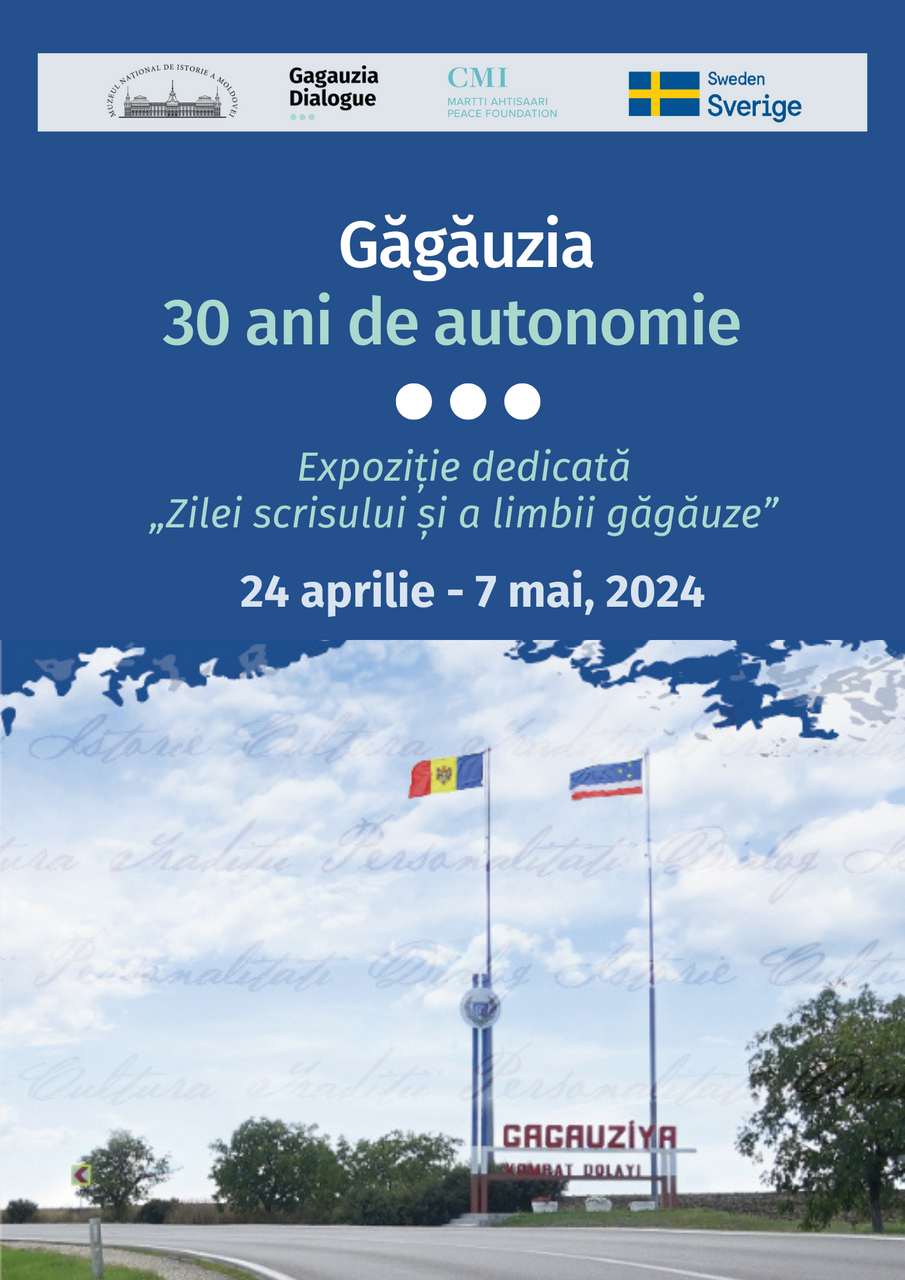 The exhibition "Găgăuzia - 30 years of autonomy" is dedicated to the "Day of writing and the Gagauz language", marked annually on April 27. On this occasion, the organization CMI - Martti Ahtisaari Peace Foundation within the activities of the Parliamentary Working Group on Gagauzia carries out a vast information and communication campaign "Gagauzia - 30 years of autonomy", which includes events, exhibitions, broadcasting and dissemination of video products , audio and print. The objective of the campaign is to contribute to social resilience and inter-ethnic peace in the country. At the same time, the campaign aims to help the general public to better understand the Gagauz specifics, the reasons for establishing the autonomy and the existing communication platforms between the central and local authorities.
The exhibition "Găgăuzia - 30 years of autonomy" is dedicated to the "Day of writing and the Gagauz language", marked annually on April 27. On this occasion, the organization CMI - Martti Ahtisaari Peace Foundation within the activities of the Parliamentary Working Group on Gagauzia carries out a vast information and communication campaign "Gagauzia - 30 years of autonomy", which includes events, exhibitions, broadcasting and dissemination of video products , audio and print. The objective of the campaign is to contribute to social resilience and inter-ethnic peace in the country. At the same time, the campaign aims to help the general public to better understand the Gagauz specifics, the reasons for establishing the autonomy and the existing communication platforms between the central and local authorities.
The exhibition "Găgăuzia - 30 years of autonomy" comes to support this campaign by presenting some notorious personalities who contributed to the development of Gagauz history, language and culture. The exhibition includes the personalities:
• Mihail Ciakir - priest and writer, was the initiator of the first newspaper in the Gagauz language, the author of the Gagauz-Romanian dictionary and the first translator of the Bible in the Gagauz language.
• Maria Marunevici - researcher, ethnographer, civic activist and politician.
• Dmitrii Caracioban - writer, teacher, author of the first Gagauz films, he is also the founder of the first museum of Gagauz culture, located in Beșalma.
• Nikolai Baboglu - writer, poet, pedagogue and folklorist, who translated the works of Mihail Eminescu, Ion Creangă, Alexandr Puskin and others into the Gagauz language.
• Dionis Tanasoglu - writer, pedagogue who contributed to the development of the Gagauz alphabet and the writing of school textbooks, was rector of the State University of Comrat.
CMI is a Finnish organization working in the field of conflict prevention and resolution through dialogue and mediation. Founded by Nobel Peace Prize laureate Martti Ahtisaari in 2000. In the Republic of Moldova, CMI implements the "Gagauzia Dialogue" project with financial support from Sweden. Within the project, CMI facilitates the process of informal dialogue between the Parliament of the Republic of Moldova and the People's Assembly of Gagauzia on the platform of the Working Group. To support this process, the project brings together legislators, experts and stakeholders from Chisinau, Comrat and the rest of the country to find common solutions for common topics related to UTA Gagauzia.
The exhibition "Găgăuzia - 30 years of autonomy" includes the creative activity of some outstanding personalities, exhibited through remarkable works and can be seen from April 24 to May 7, 2024, on the fence of the National Museum of History of Moldova, Chișinău, 31 August 1989 street, 121A.























































